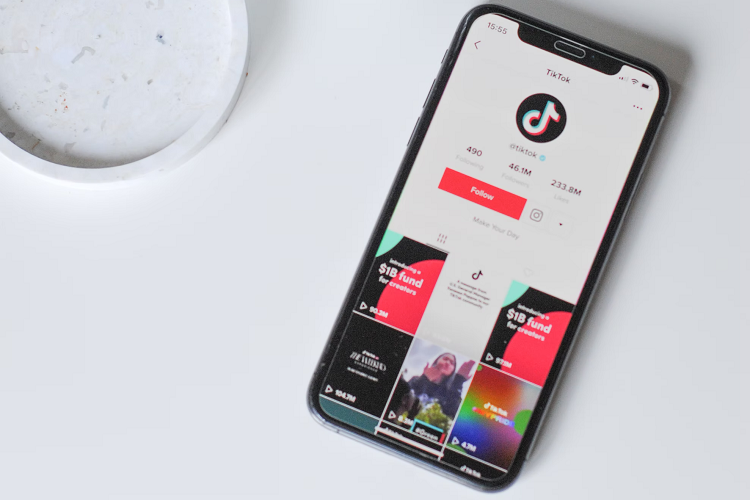Blogging is one of the most effective means to increasing website traffic, generating quality leads and conversions, boosting SEO ranking, and building website visitor engagement. These amazing benefits are why 76 percent of B2B businesses use blogging as a direct content marketing tactic. However, starting a new blog that actually gains traction is a monumental task that isn‘t always easy to accomplish.
Only 38 percent of marketers rank their content marketing strategy effective, which includes blogging. The biggest challenges you face include lack of time, producing enough engaging content, measuring effectiveness, and developing a consistent strategy. Luckily, there are many key components to implement into your blogging strategy when starting a new blog, but success won‘t happen overnight.
Choosing a Blog Platform
The first step when starting a new blog is to decide on a blog platform. There are many available, but a WordPress.org blog hosted on an existing site is often preferred because WordPress is fairly simple to use and offers a lot of flexibility. However, you may not have the control, branding, or ownership options you need. When choosing a platform you also need to consider design capabilities, blog tools, and metrics.
To help choose the right platform, ask yourself:
- What are my goals?
- What is my budget?
- Do I want a hosted platform or stand alone?
- Am I tech savvy?
Creating a Blog Strategy
The very core to your blog is your content. Quality content is king, so develop a content strategy that asserts your credibility in your specific industry, while delivering content that’s well written, compelling, and information. Your main objectives are to drive sales and leads, engage customers and influencers, and boost brand awareness. However, your readers need to be your top priority. You can’t just throw up a post and expect it to create a buzz because, according to DemandGen Report, only 40 percent of blog posts are shared.
To encourage more views and shares:
- The three most effective aspects in every post must include audience relevance, engaging and compelling information, and triggering a response.
- Always develop informative and well written content that offers a unique approach.
- Long blog posts outperform short posts so aim for over 2,000 words because they are more likely to land on page one of Google.
- Don’t duplicate your content unless you want to end up with a Panda penalty.
- Don’t create thin content that’s keyword stuffed or you can expect a Google penalty.
- Keep the discussion going with an engaging post to encourage interaction, comments, and social shares.
- Make the content easily shareable.
- Leave your readers craving more to keep them coming back.
- Use different types of formats, such as lists and How-to posts.
Incorporate Visual Content
90 percent of the information we retain is through visuals, making visual content essential for building reader engagement. Not only will you communicate with readers more effectively, but visuals help build trust and encourage social sharing. Plus, many social networks favor visuals over text, including Facebook, Google+, and Pinterest.
As research shows that blogs utilizing visuals receive 94 percent more views than those without, remember to:
- Use a variety of visuals, including images, videos, and infographics.
- Incorporate keywords in the image file name to rank in Google image search.
- Add additional alt tags for higher ranking.
- Use the proper dimensions. Generally, the bigger your image, the better it will rank.
- Compress image files but maintain the image quality.
- Make sure images are original and unique for better ranking.
- For infographics, use an embeddable code for easy sharing to increase backlinks as infographics have a high engagement rate.
Include Keywords
To make your blog posts highly visible, incorporate relevant keywords within each post. When making your keyword selections, research the keywords your competitors are using, in addition to selecting those that are most relevant to your industry.
When optimizing your blog posts:
- Use keywords as naturally as possible, especially with the rising use of spoken search from mobile devices.
- Incorporate attractive keywords in your headline and your headings.
- Place your keywords in the first 100 words and in the last paragraph. If possible, use your keywords a couple of times in the remainder of the text, but don’t keyword stuff.
Build Your Links
Not only will internal links within your blog aid site navigation, but will help you pass Page Rank between blog posts. The link authority you build with internal linking will help you rank higher on search engines with more relevant keywords.
When setting your internal links, remember:
- Use an appropriate anchor text, but don’t stuff the anchor text with too many keywords to maintain the flow of the content.
- Crosslink previous blog posts to new blog posts that are relevant, which will help build the ranking of your older posts.
- Periodically, go back to your old blog posts and link to your newer posts to allow older posts to maintain their authority.
- Only link to the most important pages and posts.
External links are used as a ranking signal to promote your page rank to drive traffic to your blog. However, external links are only effective when the connected content is relevant and linked to trustworthy sites.
To build external links:
- Link to relevant sources within your posts to develop links and build your credibility.
- When stating facts and important information, link to the source.
- Link to industry influencers and notify them to encourage social sharing.
- Use variations of anchor texts to link to the targeted pages.
Mobile Optimization
With mobile searches exceeding that of PC searches, your blog must support mobile devices. This includes having a responsive and mobile optimized design that loads quickly. 73 percent of mobile internet users will leave a website if the content loads too slow, often within the first 4 seconds. Not to mention, Google takes the user experience seriously when ranking a website.
When designing your blog:
- Use a responsive, mobile-friendly design.
- Optimize media for load time. Consider using Google Page Speed to resolve any issues.
- If you use Javascripts, minimize the number of external scripts because it will slow down load time.
- Use easy to read texts as it’s the most frustrating aspect for blog readers.
Choose Appropriate Distribution
As a general rule of thumb, you should spend approximately 20 percent of your time creating content and the remaining 80 percent promoting it. Social media is among the top method used to promote blogs, with Facebook driving more referrals than any other social platform.
To successfully promote your blog:
- Choose appropriate social media networks.
- Integrate Google+ into your blog to establish authorship.
- Create engaging posts with images to encourage clicks and interaction.
- Build your email list.
- Post in LinkedIN groups instead of just sharing on your own timeline to attract more visitors.
Develop Your Email List
Many blog owners feel that social media is the most important method to promoting their posts, but social networks are always changing their policies, so you can’t always rely on them. And, you don’t want to rely on Google alone for traffic. Instead, incorporate email marketing into your distribution as it produces an ROI of up to 4,300 percent as 91 percent of internet users check their email every day. The larger your email list, the larger your traffic.
To build your list:
- Build your email list by making it easy to subscribe and using list builders.
- Offer an incentive with a highly visible opt-in box.
Prepare for the Future
When starting a new blog, you always want to be thinking ahead. Work to build big connections early on to maintain long term relationships that will benefit your blog in the future. However, be prepared for the growth of your blog as the larger your blog becomes, the more you’ll be at risk for security breaches. Be sure to install great security features, and keep backups of your website, blog, and files. Monitor the growth of your blog with analytic tools and metrics to keep you on the right path.




